Iranian Women Through History
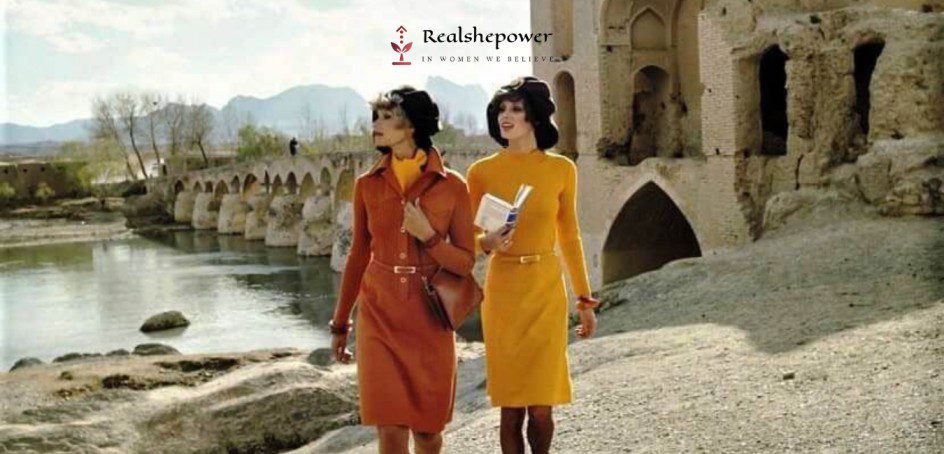

In contrast to the commonly held assumptions about the isolation and persecution of women in traditional Middle Eastern societies, Iranian women in the nineteenth century had various statuses. Polygamy and marriage with the next kin were not among traditions perpetuated by the Zoroastrians in the nineteenth century. Zoroastrian civilization of ancient Iran recognized the status of women, but they considered the family as the fundamental unit administered by men and took patriarchal views.
Women’s positions based on Zoroastrianism in different historical periods were construed differently. Kianian writers gave women great honour. Women acting as a custodian of the family were also property owners. Women belonging to the upper class of society took on sports and succeeded to the throne.
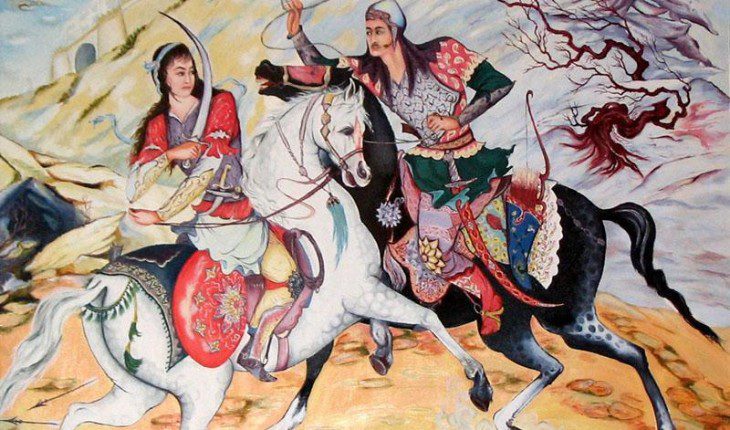
During the Sassanian era, women were secluded and had hijabs. Later Mazdakian believed in gender equality which seemed to be nothing more than an exaggerated opposition. Women from Christian communities also wore headscarves without covering their faces. There were arranged marriages, and modesty, as well as obedience, was expected from women.
Among Armenian women were wealthy merchants, government employees, nurses, and teachers. Jewish women wearing Hijab had more freedom compared to female Muslims. Jewish women from the lower class of society were usually illiterate. Not until the sixteenth century did Twelve Shiism become the prevailing religion in Iran. A chain of descendants of the Prophet Mohammad through his only child Fatemeh and his cousin and son-in-law Ali are referred to as twelve Shiia Emaman.
Shias often said that Fatemeh, the daughter of profit Mohammad, was treated equally, showing high esteem of Shia for women. The twelfth imam of Shias Mehdi went into occultation to come back in an unknown time in the future to make the world full of justice.
What provides practical and moral guidance for the Shia community is known as hadiths account of the words and deeds of the Prophet and Shia Imams. Regarding women, Shia developed their unique style of reasoning.
| Mohammad Bagher Majlesi one of the most influential Olama (Clergymen) of the Safavid period recited various hadiths from the Prophet and Shia Imaman to reveal different treatment of men and women: |
| 1. Men are entitled to have acquiescent and compliant wives not allowed to leave the house and spend their wealth without their husbands’ consent. 2. Women are granted permission to spend their fortune for religious purposes under their husbands’ control. 3. To take fast in Ramadan, women require their husbands’ consent. 4. God would not answer a woman’s prayers if she used perfume in front of men other than her husband. 5. Angels will curse a woman delaying responding to her husband’s sexual needs until he falls asleep. 6. To be fed, dressed, and absolved by their husbands was women’s right. |
A hadith from Imam Jafar Sadegh recited by Majlesi put emphasis on the importance of the inequality of rights between husband and wife. A woman asked Imam Jafar Sadegh about her rights in marriage, and what was quoted by the woman as a response proves that women do not have many rights over their husbands. Majlesi’s style of prejudiced reasoning was prevalent during the eighteenth century.
In the nineteenth century in the Qajar period, clergies’ opinions were divided on women’s status. Even some Shia scholars (Mojahedin) put forward the principle of equality and justice for all women as an argument. In a book called Jamee Abbasi, started by Sheykh Bahai, a famous Shia scholar, Nizam ibn Hussain writes that women can work as judges and issue judicial verdicts. It proves that Shia considered the idea of women’s engagement in judicial activities in the nineteenth and twentieth –century.
Another chapter of this book mentioned that men are eligible to have four wives, while before, no limit on the number of wives they can have was discussed. Shia also considered the idea of female Shia scholars. Female mollas could be a tutor, but they could not have followers. They have been allowed to write exegeses on Quran and recite it in women gatherings called Rowzeh.
The Sheykhi movement, dominant in Iran in the late eighteenth century, considered polygamy infelicitous and inappropriate. Equality of intellectual capacity in both men and women was among their beliefs.
Sufism imposed a ban on polygamy among its followers. They were not strict about Hijab. Other movements, including Ahl Hagh and Ali Allahi, granted women more freedom in daily life. Later Babi movement, which is now suppressed by the Islamic republic, criticized Shia clergy for their corruption and abuse of power.
Seyyed Ali Mohammad, the founder of the Babi movement, announced himself as the awaited twelfth Imam of Shia. He believed in complete equality between men and women, at least theoretically. Women were allowed to dress and make up as they want and go outside without Hijab. Bab reduced marriages to two only when the first wife was sterile and ready to consent. Babism does not implement a severe penalty for adultery.
Activities of Seyyed Bab’s female acolyte Tahereh Qorrat Ol-Eyn aroused the fierce anger of Shia. She came from a Shia clerical family abandoned her husband and children to serve Babism. Tahereh expounded on Babism and caused bedlam. Friends and enemies applauded her knowledge of Shiism and Persian literature.
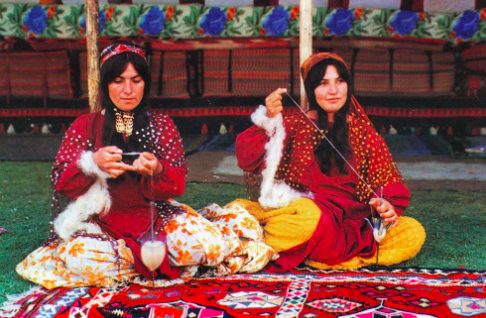
In the nineteenth century, there were found to be a massive gap between Islamic ideals for women and their actual living condition. Child marriage was prevalent among tribes. Women having tribal life had no inheritance or economic rights while they were remarkably productive. Lack of strictness on Hijab and seclusion did not necessarily guarantee a high social status for women living in tribes.
In some rural areas of the north of Iran, growing rice women had colorful clothes, worked with a trouser rolled-up, laughed, and sung loudly. They had a more open relationship with men compared to women of other regions.
After two centuries, women of these rural regions follow the same living and dressing style. From the lower class of society, rural women enjoyed the less strict Hijab rules and isolation than women belonging to the upper class. Sigheh, or temporary marriage in Islam, was common among women from different classes of societies. In urban Qajar society, women from Tehran (capital city of Iran) were ranked as royal women, respectable women, merchants, shopkeepers, nannies, maids, and black concubines in order of prestige.
In the Qajar era, royal and honorable women live inside Harams and Andaruns in the city. Harams were huge houses or the royal building where all wives lived together. Shah of Qajar had larger harams of eighty wives and many concubines and female family members and their in-laws. These women lived in total seclusion. There were arranged marriages among them that happened in childhood and adolescence. Royal children were raised by nannies and had private tutors for education.
Although the image conveyed by these Harams is that women were sex objects, the second Qajar ruler Fath Ali Shah received assistance from his daughters Khazen od-Douleh, Anis od-Douleh, and Zia Ol-Saltaneh as secretaries trusted and advisors.
Mahde Oliya, who was Mohammad Ali Shah’s wife and Naser od-Din Shah’s mother, applied her influence to assassinate Amir Kabir, the wise and patriotic minister. She was an astute politician and a resolute woman who practically led the country when her husband was ill. This woman was highly educated for her time, and some women in Harams also had an education. Naser Od-Din Shah’s daughters, Taj Ol-Saltaneh and Fakhr Od-Douleh, were both well known.
One of them was a writer and translator, and the other became a social critic and was an activist in the anti-Qajar constitutional movement. But running a household and raising children were central topics in women’s education. It was expected from wealthy women to be as industrious as lower-class women, and laziness was a disadvantage.
Western Influence and Role Of Women In Iran
Since the Turkamanchay treaty, an agreement between Iran and Russia, the urban economy was changed by western economic interventions. The labor process was altered by the shift from cottage production to factory production.
Women weaving carpets at home moved to the commercial workshops as export demand rose dramatically. Women also worked in other factories. Many people who were unemployed emigrated to Russia. All of these changed women’s roles and participation inside the Family. Western thoughts and concepts were spread by Western missionaries, diplomats, administrators, and travellers, too. Social and political reforms in Iran were requested by some Iranians who travelled abroad and wrote about western life.
Following the French revolution, the thriving of liberalism in Britain and of socialism across Europe, the segregation of church and state, and secularisation of society across Europe, people in Iran engaged in complex mental labor to play a role in shaping the culture and politics of society. Iranian intelligentsia noticed a contrast between family life in Iran and Europe.
While European families portrayed romantic love, happiness, stability, as well as mutual rapport and respect, Iranians had arranged marriages and polygamy, subduing and taking advantage of women was expected as it is today!
Along with the modern movements in Iran, other Islamic countries like Egypt revolutionized the Islamic thinking of women. Bringing the Islamic theory into line with contemporary social relations was the aim of this Islamic movement. Such Islamic reform did not happen in Iran in the light of the historical development of the institution of Shiism, its place among Iranians, and its link with the state.
A passionate anti-imperialist, Jamal od-Din Afghani, who associated Muhammad Abdu of Egypt, took the adoption of western science and technology into account to protest against imperialist advances. In addition to Babism, Sufism, and Shykhism, secular reforms were other responses inside Iran.
Intellectuals were new prophets cultivating secular ideology of humanity, freedom, and liberty. They treated Islam differently. While some rejected it, others compromised with it. But they unanimously agreed on universal secular ideals to save Iran. Emancipation of women was part of this reform.
A nationalist and atheist Mirza Fath Ali Akhundzadeh, proclaimed polygamy as a social illness and considered women entitled to an education. He was an advocate for women’s education, emancipation, unveiling, and the monogamous family. He showed deep admiration for pre-Islamic Iran before the Arab invasion and the appearance of Islam in Iran.
Another Iranian reformist, Mirza Agha Khan Kermani, published the first opposition newspaper outside Iran in Istanbul. He believed equality could not be achieved without equality between men and women’s rights. The institutions of polygamy, temporary marriage, and seclusion of women strongly came under attack by the Kermani.
Women’s current status was considered as a debasement of their previous status in ancient Iran. It is worth mentioning that men and women were equal in ancient Iran. They were mixing and travelling together freely, and everything was shared except ruling and government. But by the Arab invasion, Iranian women had to have Hijab and became isolated. Hijab has been used as a deafening and blinding tool for women throughout history.
By the Islamic seclusion, women were prevented from relating with men, attending art, trade, industry, learning, knowledge, techniques, and rules of civilization, gaining the skill to earn money, and fundamental of child-raising and household management. Women had blind marriages and no opportunity to know their men before the wedding. Polygamy was another problem caused by the invasion of Islam, which encourages hopelessness, infectious disease, and prostitution.
Another reformist during the Qajar period was Malkom khan, an ardent opponent of secularism and Iran’s ambassador to Britain, who Shah later dismissed due to his disobedience. The retardation of Iran was attributed to the lack of a constitution and codified law. He considered women as angels enhancing humanity. After his firing by Shah he remained in London and published the newspaper Called Gahnun (law). The following sentences are from the Ghanun newspaper:
Half of every nation is constituted by women. No social program can proceed without the cooperation of women. Iranian women should be the angels promoting humanity. They should be highly regarded. A responsible woman can promote humanity more than a hundred wise men. At this moment in time, women are promoting humanity in Tehran and a few other provinces. Now that many Iranian men have turned into females, it is high time that women taught them manliness.
There was the proliferation of secularist newspapers in the last decade of the nineteenth century in Iran. This idea that literate and knowledgeable women will lose their abstinence was censured. In papers, it was argued that there is no natural law to demonstrate women are not as wise as men.
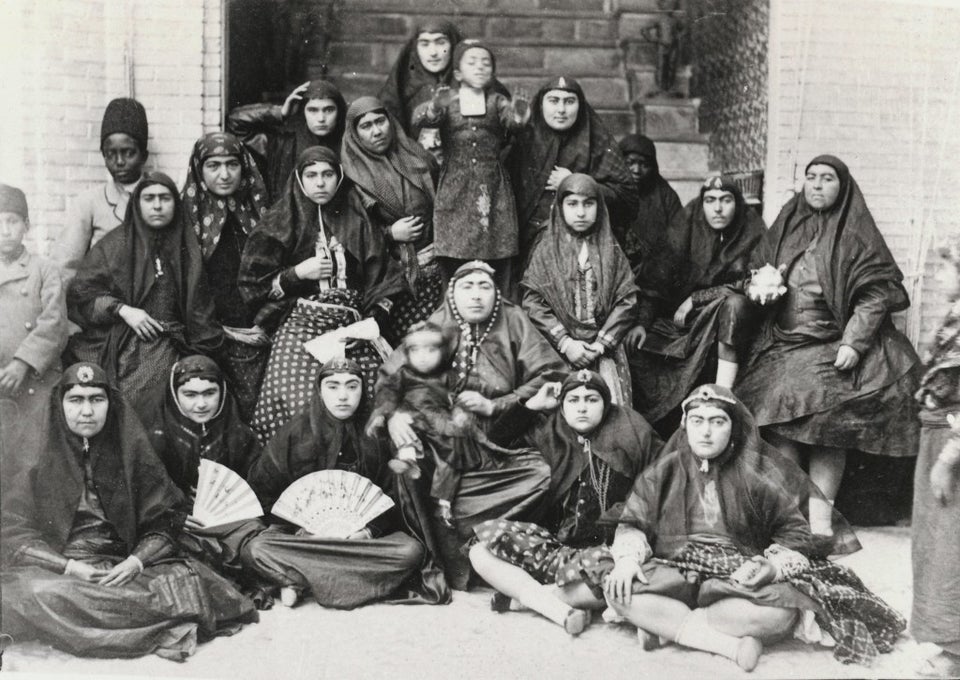
In 1890, the pursuit of the constitution was started by women too. Following the forbidding of tobacco usage by Mirza Shirazi and the consequent unrest in Iran, women also attacked shops not closed during opposition and obliged them to do so. Their traditional social and religious gatherings were turned into political meetings.
The women’s rush to attend the humanity movement was amazing. They spread news and information and were messengers and informers, also an arm in rallies. They even threatened Shah with death by letters if he passes over people’s demand for a House of justice. Another female writer had a challenge with Majles to give women an opportunity to run the country for a trial period.
Later in Iran Now, a journal edited by Malek Ol-Shoara-e Bahar, a female reporter writing commonly for the journal, had complaints about Islamic culture. Although she knew Islam as a culprit for women’s situation, she believed that women should also blame their current situation. It is women’s fight to change their lives.
We need women supporting women.
It was argued by this woman that men are not pioneers for women’s education, and instead, they multiply the number of their wives, and women’s physical beauty is the only thing that appeals to them. She raised the question that if polygamy is satisfying, why is it only allowed for men? If it is good to have polygamy, it must be free for both genders, and if it is wrong, it must be banned for all men and women. It was men who first came up with the idea of women’s societies.
A need for mixing sexes and setting up mixed gatherings was felt. In 1907, The Women’s Freedom Society (Anjoman Horriat Vatan) was established by 60 female members. Due to mob attacks, they had to stop their activities for a long time. At that time, there were growing numbers of similar organizations by women.
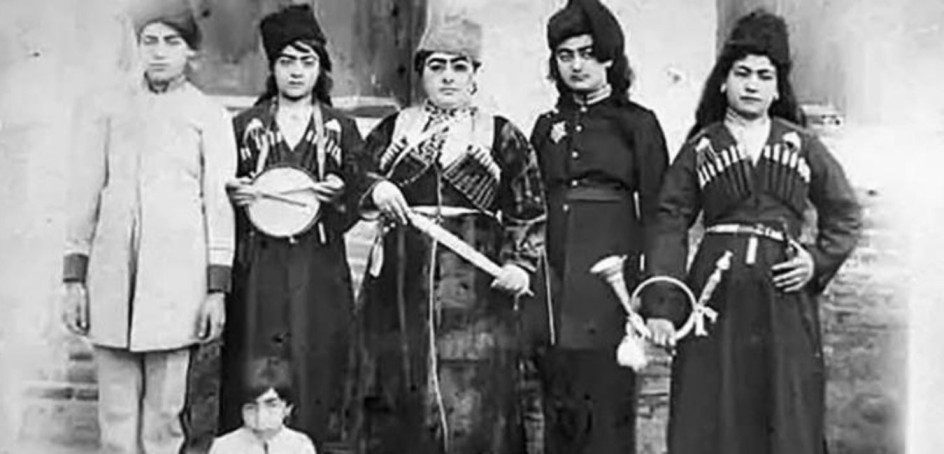
National unification
Reza Shah the first king of Pahlavi began uniformity and despotism in Iran. Indigenous social resources and ethnic and cultural traditions were stopped and suppressed by him. The upper classes living in urban areas had a promoted lifestyle, and tribal and ethnic life was considered an obstacle to progress. Reza Shah ordered people to leave local customs and dress the style of the west uniformly.
In his opinion, uniformity was of great importance. Large quantities of clothes made by Europeans were imported and sold inexpensively. He made censorship in which only modernity and strength were allowed. There was mass unveiling after he came to power, and female teachers were not allowed to teach without removing their headscarves. Although this state policy was challenged, patriarchal, communal, and religious authority was against freedom.
During Pahlavi clergies lost their control over the education system, and teaching Quran and Shariat was banned in schools. This reform also reduced Mollah’s political role. There was seen to be a flourishing number of political parties and independent women’s movement in the post-constitutional era, which were both due to relative freedom of speech existed at that time, lack of a strong government, and the post-world war I influence in the development of the women position in Britain and the Soviet Union.
Not until 1910 did women achieve paramount development by their activities. They have made contributions to progressive journals, but they did not own a newspaper. Danesh (knowledge) was the first women’s newspaper published by Mrs. Kahal, 88 years old. Soon after publishing Danesh, newspapers, and organizations were founded by women.
A woman from Isfahan of Iran, Sedighe Doulatabadi, was the pioneer of feminist activities. She had a strict family and was forced to marry an elderly man at a young age. Due to family prejudices, she could not run the school founded by herself. Mobs attacked the school, Doulatabadi was beaten, and the headmistress, who was her friend, was arrested. The school was also closed. This violence did not put an end to her feminist activities.
She established another company and a newspaper for women in Isfahan, which end up in the same destiny. She was expelled from Isfahan. The ban on Doulatabadi activities was put by the Isfahan chief of police. There was an interesting conversation between her and the chief of police as follow:
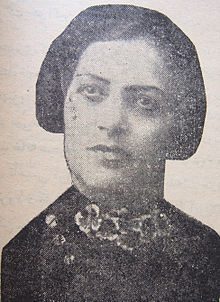
Chief of police: Doulatbadi, you have been born 100 years too early!
Doulatbadi: I have been born 100 years too late. Otherwise, I would not have let women become so enchained by men today.
Having finished her exile from Isfahan, Doulatabadi went to Tehran, the capital city, where more tolerance toward women’s activism existed. She could soon continue publishing her newspaper called women’s languages, with the circulation of 2000 during two years. Due to controversial issues, her newspaper received the second ban, and she went to France to study psychology.
In France, she wrote for a journal about Iranian women. Having obtained a degree in psychology, she came back to Iran. There were found to be several other women at that time who were put into similar trouble to have their newspaper or run their business.
![Iranian Women Through History 7 Board Of Governors Of Jam'Iyat-E Nesvan-E Vatankhah [Association Of Patriotic Women], Tehran, 1922–1932.](https://www.realshepower.in/wp-content/uploads/2021/09/Screen-Shot-2021-09-05-at-8.17.46-AM.jpg)
The best organization established by women is referred to as Patriotic Women’s League (Anjoman Nesvan Vatankhah), set up in 1922 by a Qajar princess, Motahareh Eskandari. Among the league’s objectives were educating girls and raising them morally, encouraging national industries to educate illiterate women, providing orphan girls with enough care, and setting up hospitals for poor women.
Later the eminent female activists like Doulatabadi joined this committee. They were attacked many times by religious men and women. Their campaign was continued by addressing school girls. Members of the league having set fire on anti-woman newspapers in a Toopkhane square of Tehran, the police arrested them. Adjacent Female organization established by communist women. The correspondence with Soviet women’s newspapers and journals like Eastern women (Zan Sgargh) was founded by communist women.
The first celebration of international women’s day in the northern town of Anzali was reported by this journal in 1921. Fifty women attended this event. In a letter, they asked soviet union women to send the red flag of their revolution to Iran. The political party and women’s group were not linked only through socialists and communists. The revival party also linked with feminists. This connection was made possible through newspapers like Kaveh and Iranshahr. In an article written in Kaveh newspaper by the European wife of the great writer Jamalzadeh social revolution for women’s position in Iran was asked.
Based on a report from this newspaper in Tehran in 1920, 58 schools for girls providing education for more than 1000 girls. But in religious provinces, the opening of schools for girls was opposed. Kazemzadeh, a pro-revival reformist publishing Iranshahr newspaper, replied to a letter written by an Iranian woman complaining about how Shia clergy treats women, saying that biased and brutal Mollas are interested in treating women as animal in his rank, women should resist clergy ignorant.
He mentioned the following tasks for women: setting up a weekly meeting, talking about child care, the pregnant woman’s health, the benefit of hygiene and cleanliness, the basics of housekeeping, husband and wife relationships, a woman’s responsibilities toward her husband and children, altering the inappropriate aspects of marriage and engagement and recognizing what to reject and what to accept from western culture. These meetings can be held in houses of members in turn.
He suggests even tea and cookies should not be served to make these meetings possible for women from all classes of society. They should hold literacy classes and deliver speeches. Women must give up an unnecessary trip abroad, makeup, and using jewellery. Donations must be collected to help poor women to start a business and budget the orphanages and schools.
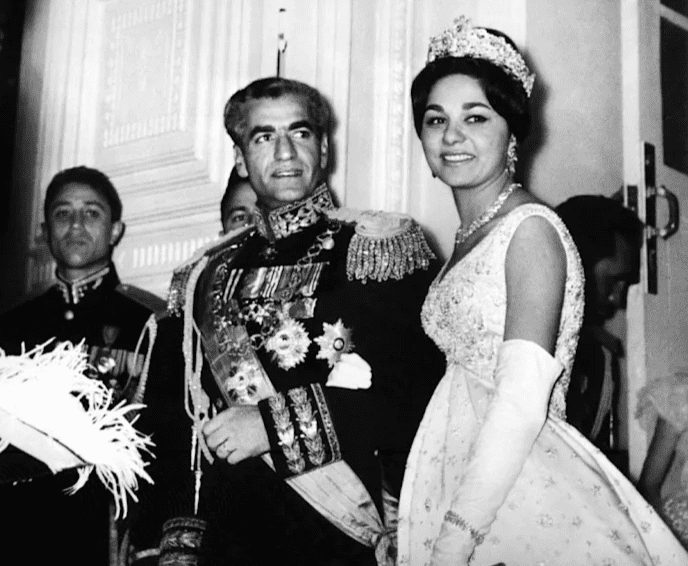
Reza Shah’s philosophy on women’s position was very similar to that of independent reformists. Ahmad Kasravi, a famous historian and social critic assassinated by a religious extremist in 1945, censured veiling and isolation of women, child marriage, and a high number of illiterate women. He admired Reza Shah’s efforts to end the resistance of clergies for change in women’s position, but Reza Shah’s view of polygamy was different from Kasravi’s opinion.
Reza Shah had three views while Kasravi denounced polygamy and Sigheh, and monogamy was what he considered the true Iranian family system. Kasravi did not favor the natural role men and women have inside family and considered the family a natural place for sex and breeding. He could not trust educated European men to advocate liberty for women. He believed that these men want to take advantage of girls’ innocence to have sex with them and then take no responsibility for family life.
Ashraf, the daughter of Reza Shah, said about his father that he, like other Iranian men, considers all his wife and family issues as a private matter an act as a man from the previous generation at home, but as a king, he was ready to put aside his feelings in favor of his country’s development. He made his mind up to show Queen, my sister, and I without Hijab to the population of Tehran considered a historical decision.
Reza Shah never wanted to break his tie with the past belief. In his opinion, girls could have a fulfilling life through marriage and nurturing children but having an education, working outside the home for a long time gives the feeling of being responsible and good for society.
In fact, Reza Shah was not above of social relations of his time. In the period of post-Reza Shah when the country was under Mohammad Reza Shah control, the son of Reza Shah, the return of many tribes to nomadic life was observed.
The earlier settlement policy forced the demolition of their livestock, disturbed their organization, and made them very poor. Some tribes had the capability for rebellion. Many women who were previously forced for unveiling gained the opportunity to use the veil, but face covering was less common and only was seen among clerical and merchant families. The land endowment was returned to the clergies. Much of the land inherited by Shah was returned to owners, and he refrained from interfering with parliament affairs.
During the 1940s decade, parliamentary politics were dominant, and new political parties expanded. Some clergies, such as Khomeini, who later became Iran’s supreme leader, criticized Reza Shah policies. Khomeini believed that:
Unveiling or bayonets movement caused our country both moral and material damage and are against the law of God and Prophet Mohammad. Mixed schools ruin girls’ chastity. Shops selling wine and drug business drained youth’s minds and put health, sanity, and Islam at risk. Music as a soul of passion and love among youth is not allowed in Islam and should not be in the school curriculum.
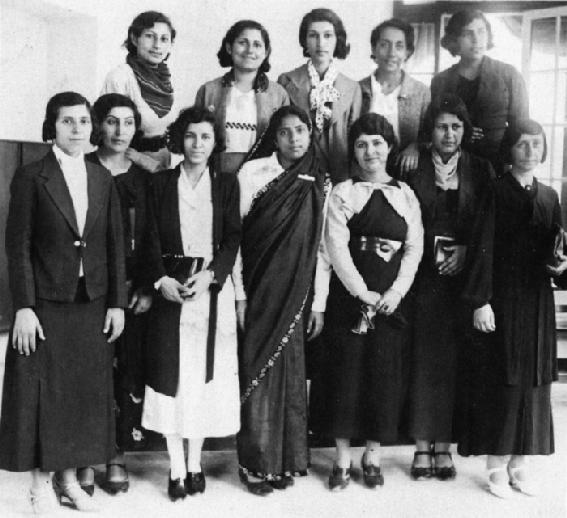
Significant development of Shiism in the 1940s in Iran was the foundation of the Fadaiyan Islam group in 1946. Fadaiyan Islam killed Ahmad Kasravi, a reformist writer advocate of women’s liberty. A concern, obsession of Fadaiyan Islam was moral decay and the rise in passion in Iranian society. This way, they showed their criticism for the position of women in society.
They opposed co-educational schools and believed in a kind of education for women in line with their responsibilities in the family. They believed that humanity would be burnt into ashes by the passion flames arising from immoral naked women’s bodies. 24-hour contact among men and women in different public places will stimulate sexual desire injuring the nervous system and other senses.
A man provoked by this naked woman in society will no longer care about his wife or wives and file for divorce, which is the reason for the increasing number of divorces. They showed disapproval for women’s employment except for women who have to be the breadwinner and take responsibility for the family. To be in charge of the house and produce children is the best job for women.
Fadaiyan Islam believed that the implementation of rules prescribed by them would convert Iran to a paradise in the world. Four decades later, the Islamic Republic of Iran revitalized these ideas.
After Reza Shah, there was the proliferation of pro-soviet political trends. Democratic parties were found in Kurdestan and Azerbaijan of Iran. The women section of DPA ( democratic party of Azerbaijan) was also formed. These women swore by the sacred soil of their homeland Azarbayjan that they would fight until the last breath, near men to dave their liberation and struggle until the last breath for freedom of Iranian women living under oppression, injustice, and captivity.
Azerbaijan’s provisional government let women attend elections for the first time in Iran. They paid men and women equally, and women were also had paid maternity. Tudeh party was another pro-soviet party founded by Marxists jailed by Reza Shah. Their program was to protect civil liberties and human rights for all classes of society, especially workers. They also showed support for women’s rights and gave women power. They established a strong union of women. Tudeh emphasized the importance of women’s economic independence.
The Tudeh association of women joined the international democratic federation in 1947 they represented in international conferences. Two years later, they were banned. This association was replaced by the democratic association of women ( Tashkilat Democratic Zanan) struggling for social and political women’s rights. Not until the 1960s did the state touch the family area, which affects women’s rights.
In 1967, Iran’s new party presented a bill to Majles (parliament) to reform the family structure. In this bill, practices damaging family life were restricted or made illegal. Arbitrary divorce, pleasure-based polygamy, and man’s right to children’s custody were those practices. Women’s association later criticized the family protection law of 1967 about allowing men to have a second wife even when it is allowed by the first wife, and women deprival to divorce even if her husband suffered from an infectious disease.
Women and the 1979 revolution
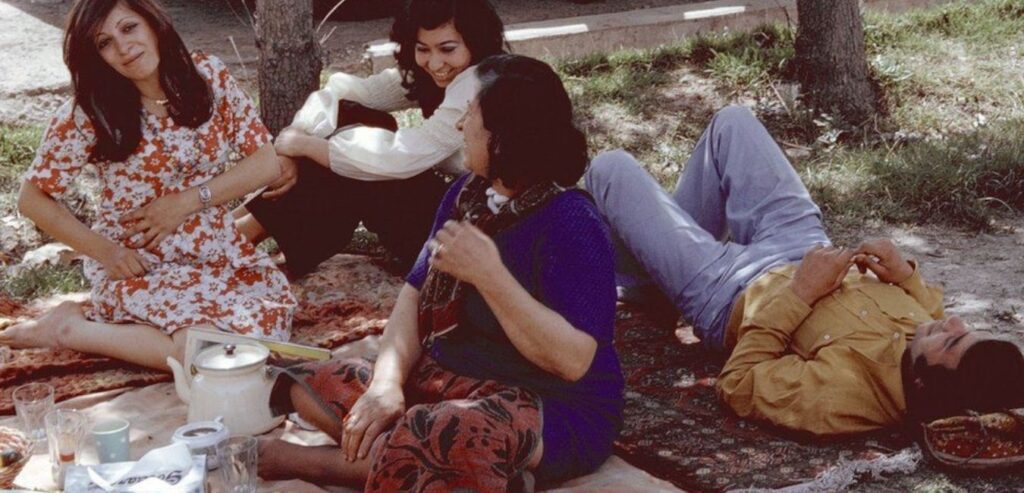
Organized and led by men, many women, either with Hijab or without it, came to the street and Chanted Beloved Khomeini, Order Me to Shed Blood for You” (Khomeini-ye Azizam Begu Barat Khoon Berizam). Today, many of those women bitterly regret what they did at that time because they did not have the foggiest idea of where Iran will end up by the 1979 revolution.
Later, the Islamic republic also tortured, raped, and executed some of those female supporters. Women who could shout slogans against Shah without wearing Hijab in the street lost freedom of being unveiled after the 1979 revolution.
As you probably heard recently in Iran, women who joined Anti Hijab campaign and removed their headscarves on Wednesdays called white Wednesday received heavy sentences such as 20 years prison sentence. Among those women are Mozhghan Keshavarz, Yasaman Ariani, and Saba Kord Afshari, who serve their sentence in Gharchak prison, the most notorious prison of the Islamic republic.
A new chapter was introduced into the history of women by the 1979 revolution. Islamic and veiled women were of paramount importance for the revolution. The Islamic republic has purified society by controlling women’s movement and labor. Women here are not allowed to serve their own interests but the patriarchal interest.
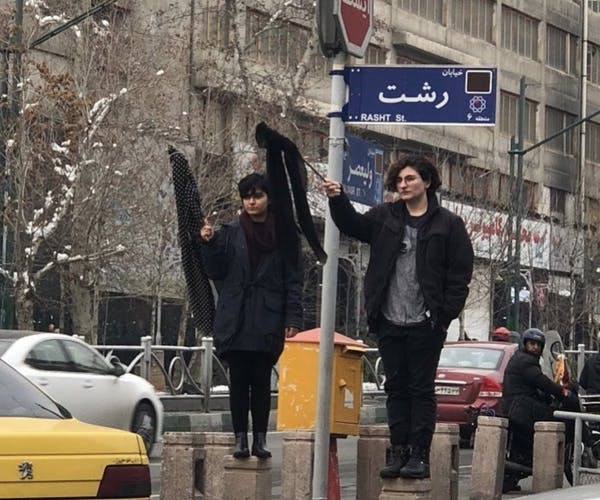
| Condition of women post 1979 revolution |
| 1. The Islamic Republic changed the pre-Pahlavi family laws, among them, lowered the marriage age from 18 to 9 and gave child custody to men after divorce. 2. allowed temporary marriage (Sigheh), and polygamy. 3. Gender-based segregation was required for some public places like swimming pools, schools, beaches. 4. The back of buses was allocated to women using public transport, although taxis and minibusses are gender-mixed. 5. The Islamic republic severely punished those who do not observe gender-based regulations. 6. Women who committed or even were accused of adultery were flogged, stoned, or executed. 7. Homosexuality is legally punished. |
Sexuality is seen as an integral part of the state’s ideology by Iranian feminist scholars. The revolutionary culture was considered female sexuality rejection by another critique and concealment of women’s bodies as the focus of politics rooted in revolutionary purity defense and distinctiveness of Shiism, which seems to be the responsibility of veiled women.
In today’s Iran, the black Chador is considered the most preferred and complete form of Hijab. Basij (mobilized) force was the way to mobilize women in the Islamic republic. The mobilized women were called typical symbols of devotion, self-sacrifice, and love of God and Islam by Khomeini.
The gender and state bond contributed to women’s recruitment for different purposes. Women were trained as guerilla fighters or regular soldiers, nurses and cooks working in the war zones. Women were also mobilized for not combative purposes, like altruistic tasks in cultural, educational, sport, and artistic fields.
The morality squad guarded gender segregation was another section in which women were recruited. They have protected Hijab and dress codes set by the Islamic Republic. They were referred to as gender police. These women mostly come from low-income families and are young and ready to use vulgar language for the intimidation of their targets. They are visible in streets and towns.
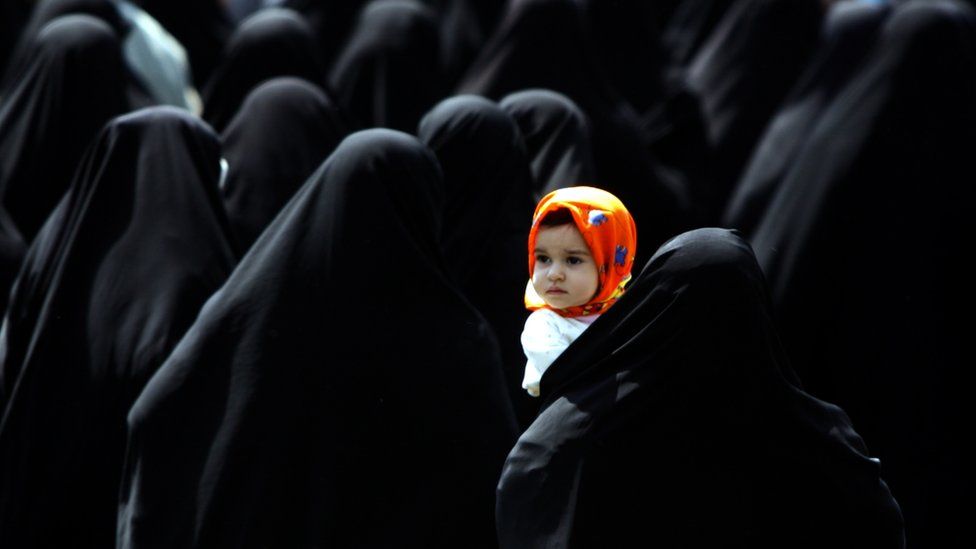
While editing this summary, I watched a documentary directed by the famous Iranian human rights activist Narges Mohammadi, broadcasted on BBC Persian TV. In this short movie, she along with other political prisoners serving long sentences condemned the white torture.
White torture is psychological torture inflicted by keeping people in a small cell without a window for months and years. Losing personality, hallucination, and psychotic breaks are some documented effects of this kind of torture.
Having kept people in a cell for several months, interrogators can more easily force people to confess. Narges Mohammadi, in this movie, asks the audience to imagine how it could be for a prisoner who spent a long time in a cell to sit on the chair inside an interrogation room and forced by her or is interrogator to express how she or he is sexually aroused. Although this sexual torture looks pretty annoying for both women and men, it is harder to tolerate for women.
Bofore 1979, Mohammad Reza Shah established SAVAK, or Intelligence and Security Organization of the Country, with the assistance of the CIA of the USA. Torturing and executing of Pahlavi regime’s opponents were common practices of the SAVAK. Although the 1979 revolution dissolved it, the Islamic Republic used some SAVAK torturers and experiences to establish a hundred times more notorious prisons to suppress whoever they want.
People who changed their religion, feminists, the opponents of Hijab, LGBTQs, reformists, and even people who believed in the Islamic Republic were sent to security prisons of the Islamic Republic and suffered from brutal tortures. There are found to be several books written by political prisoners about the tortures inside Islamic republic prisons, but what really political prisoners have been through cannot be described by words.
Sources:
Women and politics in Iran: Veiling, Unveiling, and revealing, Cambridge University Press, 2009, Hamideh Sedighi.
Women and the Political Process in Twentieth-Century Iran, Cambridge University Press, 1997, Parvin Paidar.
Written by Mahtab from Iran.
